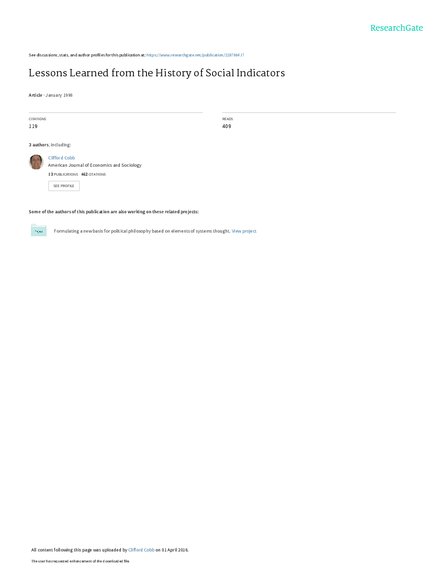
Over the past two centuries, nations and communities have become increasingly reliant on statistical measures to assess their status and to set policies. Successive generations have endeavored to gather and use social statistics, or indicators, in a more systematic and purposeful manner. Technically speaking, an indicator refers to a set of statistics that can serve as a proxy or metaphor for phenomena that are not directly measurable. However, the term is often used less precisely to mean any data pertaining to social conditions. We hope that by looking at the history of social indicators, we can avoid earlier mistakes and promote better strategies for indicators’ development. Indicator movements often begin with extreme optimism, aspiring to guide society rationally. Later, when social change does not seem to flow clearly from the effort, practitioners can become unduly pessimistic. The realistic hope is that social indicators will enable nations and communities to face their condition more effectively. An annual report on the well-being of a community or nation has the potential to focus energy on problems, analyze their interrelationships, and attack them in a systematic manner. But based on past experience, these goals are not likely to be reached if the production of social indicators is confined to collecting statistical data, publishing chartbooks and reports, and publicizing findings.